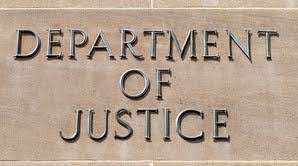The “Person” of the Year: Goldman Sachs

Bear with me for a second, but remember Presidential Candidate Romney’s statement in 2011 that “Corporations are people.” Starting with that premise, my so-called “Person” of the Year award for 2020 goes to, drumroll . . . Goldman Sachs, for its defining ethical and compliance lapses, leading to the largest ever FCPA Settlement.
With tongue in cheek, the story of 2020 has to be the Goldman Sachs FCPA enforcement action. Why?
The Goldman Sachs bribery enforcement case is the most important case ever brought by the Justice Department and the SEC. Not just because of its size, and the sheer greed involved. But because of the important insights concerning Goldman Sachs’ C-Suite, its culture and its compliance controls.
Goldman’s ethics and compliance program, on paper, appeared to be effective. But, in reality, Goldman’s culture was defective, because when push came to shove, lucrative business deals, even if corrupt, were more important to Goldman than compliance. Even when faced with overwhelming evidence, red flags and concerns, Goldman senior management had no interest, and made no effort, to follow up, learn the facts and ensure compliance.
While it may be easy to describe the Goldman Sachs case as unusual in scope and size, I would not be surprised to learn that other large banking firms were involved in similar misconduct. It just so happens they have not been caught yet.
When you look at Goldman Sach’s compliance controls, and its deal review structure, it is easy to imagine other investment banks with similar programs that could easily be circumvented in just the same way that Goldman Sachs’ bad actors evaded compliance review.
Further, and just as important, Goldman Sachs’ misconduct underscored what many companies have – a strong paper compliance program, coupled with senior management statements of support, but a complete absence of real commitment when faced with lucrative financial opportunities. Paper and words are worth nothing unless there is real committed action and follow up. Goldman Sachs failed on both those scores.
The Goldman Sachs case should be studied and used for ethics and compliance lessons in every financial institution. Many companies have similar procedures.

Let’s dig in a little deeper and I can make my points.
Between 2009 and 2014, Tim Leissner, Goldman Sach’s head of Asia, Roger Ng, Goldman Sach’s head of Malaysia and Jho Low, the corrupt third-party intermediary, and others orchestrated bribery payments to Malaysian government officials and Abu Dhabi to secure important advisory and underwriting business for Malaysia’s 1MDB fund. In total, they made 1.6 billion in bribery payments to secure three bond offerings relating to energy acquisitions, totaling $6.5 billion. Goldman eventually earned approximately $650 million in fees.
The bond transactions were subject to Goldman’s internal review and authorization. Leissner and Ng had a long-time relationship with Jho Low, who they sought to onboard as a client and use in other transactions. Goldman rejected Jho Low because of corruption risks.
Goldman’s firmwide capital committee (“FWCC”) reviewed the transactions, and required review and approval by the Business Intelligence Group and compliance, both of which were represented on the FWCC. Leissner, Ng and another employee misrepresented details about the transactions, including Jho Low’s involvement. Other officials and employees, however, failed to enforce its internal review and accounting controls. Specifically, several officials failed to confirm Jho Low’s non-involvement despite facts suggesting that Jho Low was in fact involved in the transactions. Aside from this significant red flag, the proposed transactions raised serious red flags that were ignored by FWCC members in order to continue the lucrative business transactions.
Leissner, Ng, Low and others orchestrated bribery payments to various foreign officials though shell companies and various bank accounts. To fund the bribes and their own profits, Leissner, Ng, Low and others stole money from the bond raises. Despite concerns raised by Business intelligence, Compliance and FWCC members, Goldman continued with the transactions, bank transfers and bribery scheme. Along the way, senior managers ignored or failed to follow up on serious concerns.
After the bond deals were completed, and as increased press attention and red flags uncovered, internal phone calls among Goldman’s executives focused on serious bribery concerns and misconduct. Goldman failed to investigate these concerns or perform any internal review. High-ranking employees failed to escalate concerns, despite being required to do so under existing policies and procedures. Goldman executives were involved in several internal phone calls in which employees reported bribery concerns and disparate treatment and review of the 1MDB transactions versus other Goldman deals. Goldman executives ignored these reports and brushed them aside.

In a weak attempt to restore its reputation, Goldman sought claw backs of bonuses against various senior executives. To me that is too little too late. Financial penalties rather than terminations only repeats a mistake we have seen before – Goldman viewed this entire incident as a cost of doing business.
The picture painted of Goldman’s misconduct is a sad one – senior management did not want to confirm compliance or the legality of the large lucrative deals. Goldman made a distinct choice and ended up paying the price and the ignominious honor of paying the largest FCPA penalty in history. Like many other scandals, Goldman has earned its place in the misconduct hall of fame – one again proving that money and greed outweigh ethics and compliance. My only hope – an optimistic one – is that other businesses will learn that lesson and adhere to integrity before it is too late.















